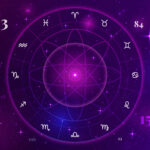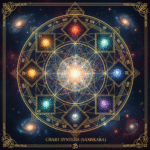Is love truly enough to carry a marriage through decades of challenges, changes, and growth? We will explore the core component of Vedic compatibility—the Gun Milan system—not as a final judgment, but as a brilliant diagnostic tool for understanding the karmic and natural compatibility between two people, giving you the wisdom to nurture your unique relationship.
It’s a beautiful, essential start, but the ancient rishis of India had a more complex, practical view. They understood that a successful, lasting, and harmonious union requires more than just emotional connection; it demands compatibility on the levels of psychology, health, temperament, and even destiny. For centuries, Vedic astrology (Jyotish) has offered a profound solution: a powerful, 36-point system to assess marriage suitability, known formally as Ashtakoot Milan, or more commonly, Gun Milan.
This process of kundli matching is often misunderstood, viewed as a mysterious “pass/fail” test. Our goal today is to demystify this ancient science.
The 36-Point System: A Deep Dive into Gun Milan
The Gun Milan system is an analytical method that compares the birth charts (specifically the Moon’s position in the Nakshatras) of two individuals based on eight key categories or Kutas (Ashta means eight, Koota means factors). These eight factors carry a weighted score, adding up to a maximum total of 36 points (Gunas).
The beauty of Gun Milan is that it moves beyond superficial chemistry to look at the energetic architecture of the partnership. It asks: How do your natural tendencies align? Will you support each other’s growth? Are your fundamental temperaments and physical constitutions harmonious?
The Eight Kutas (Factors) of Compatibility
To truly grasp the concept of vedic relationship compatibility, you must know what each Koota represents. They are listed below in ascending order of their importance and weight in the total score:
| Koota (Factor) | Weight (Points) | Primary Domain of Compatibility | What it Assesses |
| 1. Varna/Jati | 1 Point | Spiritual/Ego Alignment | Mutual development; ego-clash potential. |
| 2. Vashya | 2 Points | Dominance & Mutual Control | Who is dominant; power dynamics. |
| 3. Tara/Dina | 3 Points | Well-being & Luck | Mutual fortune, support, and longevity. |
| 4. Yoni | 4 Points | Sexual & Intimate Harmony | Physical attraction and intimate behavior. |
| 5. Graha Maitri | 5 Points | Friendship & Mental Outlook | Intellectual connection; planetary friendship. |
| 6. Gana | 6 Points | Temperament & Nature | Psychological affinity; fundamental behavior. |
| 7. Bhakoot | 7 Points | Wealth, Prosperity, & Family | Long-term family vision, financial luck, and family size. |
| 8. Nadi | 8 Points | Health, Genetics, & Progeny | Genetic harmony, health problems, and capacity for healthy children. |
| Total | 36 Points | Holistic Life Harmony |
The last three factors—Gana (6), Bhakoot (7), and Nadi (8)—are considered the most critical, accounting for 21 out of the 36 total points. Their weight reflects the importance the rishis placed on psychological harmony, material stability, and the health of the family line.
Why the Score Isn’t the Final Word: An OREO Analysis
The most common anxiety around kundli milan is the final score. Society often dictates that a score of 18/36 is the minimum threshold for marriage. But does a low score mean a relationship is doomed? Absolutely not. This brings us to the crucial insight of this entire system.
OREO Argument: Gun Milan is a Guide, Not a Guardian
Opinion: The Gun Milan 36-point system is a brilliant and efficient tool for understanding the karmic and natural compatibility between two people, but it is not the final word on a marriage’s success or failure.
Reason: Gun Milan is an ‘Ashtakoot’ (8-factor) analysis based only on the Moon’s position (Nakshatra). The Moon represents the mind, emotions, and nature—which it assesses brilliantly. However, it does not look at the rest of the birth chart. Specifically, it ignores:
- The strength and condition of the 7th House (primary house of marriage) and its Lord.
- The influence of Malefics (Mars, Saturn, Rahu, Ketu) on the 7th House.
- The presence of major astrological afflictions like Mangal Dosha.
- The Dasha-Bhukti periods (planetary cycles) that the couple will experience during the marriage.
- The Synastry of the charts—how one person’s planets fall into the houses of the other.
Example: Consider a couple that scores a fantastic 30/36 points—a near-perfect kundli matching. However, if the groom’s 7th Lord is placed in the 8th house with malefic aspects, or if the wife is running a severely difficult Saturn/Ketu Dasha, the marriage can still face immense strain or even fail. Conversely, a couple with a seemingly “low” 16/36 points can have a wonderful, lasting marriage if their 7th Lords are strong, their Moon and Venus are well-placed, and they are in harmonious planetary periods. Their low score simply indicates areas (like Nadi or Bhakoot) where they must be consciously more careful and supportive.
Opinion/Restatement: Therefore, use Gun Milan as a comprehensive relationship matching guide to understand your natural strengths and inevitable weaknesses as a couple, not as a simplistic pass/fail grade for your love.
The Critical Kutas: Temperament, Money, and Health
To further highlight the diagnostic power of this ancient system, let’s focus on the three highest-weighted Kutas, which provide the deepest insight into the relationship’s core longevity and harmony.
Gana Koota (6 Points): The Temperamental Alignment
Gana relates to the basic psychological and spiritual disposition of the individual. There are three categories:
- Deva Gana (Divine): People with a higher spiritual inclination, gentle nature, and morality.
- Manushya Gana (Human): People with a balanced mix of spiritual and worldly desires; practical.
- Rakshasa Gana (Demonic/Fiery): People who are strong-willed, assertive, less compromising, and highly passionate.
Compatibility is highest between those of the same Gana. A Rakshasa-Deva combination is considered a challenge because their fundamental ways of approaching life, problems, and morality are often diametrically opposed. This Koota is crucial for day-to-day harmony—it determines how you fight, how you make up, and how you approach shared values.
Bhakoot Koota (7 Points): Prosperity and Family Vision
Bhakoot assesses the relative positions of the Moon signs in the two horoscopes (e.g., the Moon signs are 1st and 7th from each other, 3rd and 11th, etc.). Poor Bhakoot (called Bhakoot Dosha) can indicate long-term financial instability, a struggle for wealth, or discord within the extended family, which are all significant stressors on a marriage. Conversely, a strong Bhakoot indicates mutual material luck and the potential for a stable, prosperous home life, making it a critical aspect of vedic compatibility.
Nadi Koota (8 Points): The Life Force and Progeny
This is the single most important Koota, carrying the maximum 8 points. Nadi relates to the flow of Prana (life force) and the genetic stream. There are three Nadis: Aadi (Vata/Air), Madhya (Pitta/Fire), and Antya (Kapha/Water). Compatibility is highest when the couple belongs to different Nadis.
If both individuals belong to the same Nadi (e.g., both are Aadi Nadi), it is considered a significant affliction (Nadi Dosha). The ancient wisdom suggested that a same-Nadi pairing could potentially lead to health issues for the partners or, more critically, problems with conception or the health of the children (progeny). Because this directly impacts the core vitality and continuation of the family line, it carries the highest weight.
The Practical, Compassionate Verdict
The goal of this ancient practice is not to find a perfect 36/36, but to illuminate the natural friction points and effortless strengths that are built into the relationship’s foundation.
What If We Have a Low Score (14-17 Points)?
Do not panic. A low score simply means your relationship has pre-identified areas where conscious effort, communication, and compromise are absolutely necessary.
- Low Gana: You need to learn how your partner’s core nature differs from yours. Accept that one might be intensely assertive (Rakshasa) while the other is yielding (Deva), and develop a communication strategy that honors both styles.
- Low Bhakoot: You must be highly vigilant about your joint finances. Create clear budgets, save diligently, and be proactive in your material planning. Do not rely on “luck.”
- Low Nadi (Same Nadi): Consult a doctor regarding family planning. Astrologically, this Dosha often has powerful remedies through specific ceremonies, gem prescriptions, or planetary worship that an experienced Jyotishi can recommend. A low Nadi score is a warning, not a death sentence.
The Role of the Full Chart in Relationship Matching
A good Vedic Astrologer will never stop at the 36-point score. After assessing the kundli matching with Gun Milan, the final, crucial step is the analysis of the full birth chart, focusing on the Pancha-Suddhi (five purifications):
- 7th House Strength: The overall health of the house of marriage.
- Dasha Compatibility: Do your planetary periods support marriage success?
- Mangal Dosha: Is Mars creating tension, and can it be properly cancelled?
- Planetary Synastry: How do your planet’s energies mix in each other’s charts?
- Navamsha Chart (D-9): The chart of marriage itself.
In conclusion, the Gun Milan system is an unparalleled gift from the rishis—a concise, powerful metric to understand the vedic compatibility baked into a union. It provides a roadmap for the journey, highlighting which curves will be smooth and which will require careful steering.
Use the score not to judge your love, but to guide it. Knowledge of your shared weaknesses is the highest form of wisdom, for it allows you to consciously overcome them and build a bond that is truly invincible.











